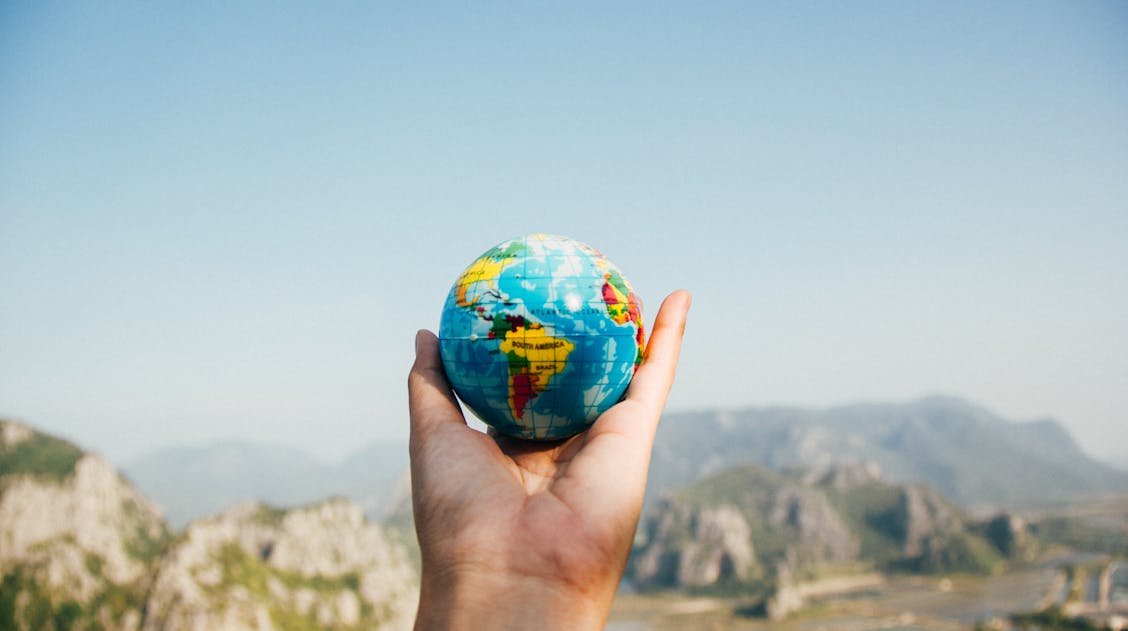
Mother Earth Day – Exploring Rights to Nature
Happy International Mother Earth Day!
All living creatures depend on the health of Mother Earth for their survival. Many factors, including climate change, the loss of biodiversity, desertification, and the disruption of natural cycles, can influence Mother Earth’s health. Unfortunately, human actions and behaviours have devastating effects on this balance. Examples of this include pollution, overpopulation, burning of fossil fuels, and deforestation. One main example of this is plastic pollution, which is causing serious damage to many ecosystems. Various governments around the globe have developed a legal framework to protect ecosystems from human destruction, known as Rights of Nature, because of this. Recognising the rights of ecosystems gives them a voice through representation, empowering people to hold governments accountable for ecosystem degradation.
The Rights of Nature framework supports harmony with nature and the earth by setting boundaries that governments and companies must respect.
This article details MDPI research that supports the Rights of Nature legal framework and how it can be used to help protect against threats such as plastic pollution and promote harmony with nature and the earth.
Planet vs plastics
The theme for Mother Earth Day this year is Planet vs Plastics. The excessive use of plastics in today’s society causes environmental pollution. Plastic pollution in the ocean seriously impacts marine animals as it can be ingested, or cause entanglement and suffocation of various species. Additionally, many marine animals starve because they confuse plastic for prey, filling their stomachs with plastic instead of food. Furthermore, they can also suffer from lacerations caused by plastics, which can cause internal injuries or infections. Moreover, plastics can physically impair marine animals preventing them from being able to swim and deep dive.
A recent MDPI study published in Microplastics demonstrated that following long-term exposure to microplastics caused increased mortality in Mysid Shrimps.
The increasing environmental imbalance we see today shows we have strayed away from our collective responsibility with the 1992 Rio Declaration, which aimed to “promote harmony with nature and the Earth, to achieve a just balance among the economic, social, and environmental needs of the present and future generations of humanity”
The Right of Nature legal framework has the power to change this by setting boundaries for nature and consequences for disrupting this harmony.
What are the Rights of Nature?
The Rights of Nature are a legal framework that recognises that an ecosystem has the right to exist, flourish, regenerate its vital cycles, and naturally evolve without human disruption.
The ecosystem has the right to legal representation when there is a disruption caused by humans or human behaviors. Legal representation will be in the form of a guardian, similar to charitable trusts, who designates a trustee who will act on their behalf and in their best interests for their respective ecosystem. Recognising the rights of ecosystems and nature holds governments and companies accountable for causing environmental degradation.
History of the Rights of Nature law
The Rights of Nature framework was first suggested by Professor Christopher Stone, a law professor. In 1972 he published an article titled, “Should Trees Have Standing – toward legal rights for Natural Objects.” This article started the conversation of rights for nature as it explored how trees have no recognised rights. Following this publication, Professor Roderick Nash, Thomas Berry and Cormac Cullinan advocates for the Rights of Nature in the law community published their research. This research helped to establish the first Rights of Nature laws. In 2008, residents of the Borough of Tamaqua, Pennsylvania, US, worked alongside lawyers from CELDF and the mayor of Pennsylvania they drafted a ballot to ban corporations from disposing of sewage sludge. This was the first Rights of Nature law to be passed and led to similar movements from other countries
Countries that recognise Rights of Nature law
Ecuador was the first country to recognise and codify the Rights of Nature in its constitution. Furthermore, other countries later followed suit and recognised the Rights of Nature, including New Zealand, Australia, Columbia, the United States, Bangladesh, and India.
One example of this is New Zealand, which, in 2017, gave legal rights to the Whanganui River.
The Whanganui River is recognised as a living whole, and its rights are represented by the government as well as Mauri representatives, who are in part responsible for its health and wellbeing. The Indigenous Mauri community in New Zealand welcomes the change, as they have always recognised the river as a living entity deserving of rights.
Giving rights to nature has a lot of power to bring about change and harmony with nature and the earth. However, not all governments recognise this law; one example of this is in the United Kingdom. It is the UK’s stance that rights can only be held by legal entities with a legal personality. Despite this, other countries that do accept the Rights of Nature continue to support and demonstrate the usefulness of this legal framework in a variety of ways.
Rights of Nature in Ecuador
Ecuador is leading the way in protecting nature with legal rights. A recent MDPI study published in Sustainability examines the constitution of Ecuador in relation to the Rights of Nature legal framework. There are four articles in the Ecuadorian constitution that are dedicated to protecting nature. These include respect for its existence, maintenance, integrity, and regeneration.
It was important for Ecuador to establish their own model, which incorporates indigenous philosophy, known as the well-being model. The main goal of the model is harmony among humans and non-humans. One of the measurements of the model is the quality of the natural environment. The philosophy behind it is that humans should compromise on their goals instead of competing with nature.
Potential issues with Rights of Nature laws
The authors debate that viewing nature and humans as one entity in law could lead to problems. This is because it disregards the fact that there could be conflicts between these rights. For example, it could spark a debate about which ecosystem takes precedence over another.
In the case of generating hydraulic power to replace fossil fuels, building a dam could destroy one ecosystem; however, using hydraulic power over fossil fuels could save many ecosystems. The authors conclude that giving rights to nature can be used successfully to protect nature from humans. In addition, they also note that in order to establish harmony between nature and humans, we must redefine our relationship with the non-human world.
Rights of Nature in Panama
Other countries are also using the Rights of Nature legal framework to promote harmony with nature. One example of this is Panama, which established its own Rights of Nature legislation in 2023.
The legislation requires that the government’s future policies respect the rights of Panama’s ecosystems. Moreover, Panama has taken the Rights of Nature legal framework further by extending it to prevent and restrict the effects of human activity, which can result in species extinction. This included banning the unsustainable fishing of endangered species. The legislation also acknowledges the rights of marine animals in Article 10. In addition, in 2023, Panama passed another law that promotes the protection and conservation of sea turtles and their habitats.
Under this law, fisheries are expected to implement methods that will prevent the bycatch of sea turtles. Bycatch is caused by irresponsible fishing methods, which result in the untargeted capture of marine animals. Also, the law required the creation of a national committee that will be responsible for the conservation of sea turtles, which includes identifying and recommending protected areas for their preservation. In addition, this law also gives sea turtles the right to an environment free of pollution.
Rights of Nature to protect sharks
A study published in Sustainability is calling for further action. The authors argue that similar rights should be extended to other marine animals, in particular sharks. Sharks are crucial to maintaining the balance of the ocean ecosystem. They are referred to as keystone species.
Keystone species have a huge impact on the ecosystem. They maintain the structure and community of ecosystems. Without them, ecosystems would be very different and, in some cases, cease to exist.
Sharks are apex predators; they occupy the highest trophic level in the food web. Because of this, they have a number of important responsibilities within the ecosystem. This includes shaping the traits of prey and how they interact with each other. They also control the numbers of prey and smaller predators in the ecosystem, regulating the food web balance. All these activities contribute to maintaining the ecological balance of the ocean ecosystem.
Shark population decline
The global population of sharks is declining rapidly. Researchers found that, since 1970, shark and ray numbers have diminished by 71%. There are a variety of threats to sharks associated with human behaviour; this includes climate change and habitat degradation. This is caused in part by overfishing, target fishing, and the bycatch of sharks.
Research shows that shark bycatch is one of the main threats to sharks. The study highlights approaches that aim to improve the protection of shark populations and their habitats. Additionally, it discusses countries and approaches that use the right-to-nature legal framework to promote animal conservation, primarily focusing on the success of the legislation in Panama.
The authors conclude that similar legislation to that for sea turtles in Panama is crucial for not only the protection of sharks but also for the conservation of their habitats. As an overwhelming percentage of sharks are caught and killed by fisheries. The authors note that it’s extremely important to consider the management of fisheries as covered in the Panama Sea Turtle legislation. To implement this, they recommend further research on holistic and rights-based approaches to pave the way for legal frameworks to protect and ensure the conservation of sharks.
Summary
Mother Earth’s health is fundamental to sustaining life on our planet. The Rights of Nature legal framework has great potential for supporting and protecting Mother Earth from harmful human behaviours.
The legislation implemented in Panama is a great example of how humans and nature can exist in harmony. Furthermore, it demonstrates how marine animals and the ocean ecosystem can be protected from plastic pollution using a legal framework. Additionally, other resources that promote harmony with nature include the Sustainable Development Goals.
The Sustainable Development Goals were created by the United Nations; they provide a shared blueprint for peace and prosperity for people and the planet now and into the future. Protecting marine animals and promoting their conservation falls within Sustainable Development Goal 14: Conserve and sustainably use the oceans, sea, and marine resources for sustainable development. This includes protecting oceans and marine animals from plastic pollution by shining a light on the magnitude of plastic pollution.
Harmony on earth between nature and humans is crucial for future generations and is a goal that all should be striving towards.
If you would like more information on MDPI articles that are contributing to sustainable development goals, please see our recent article on deforestation.










